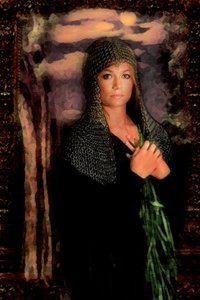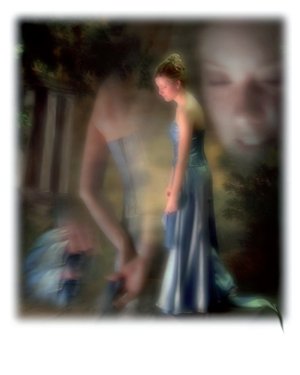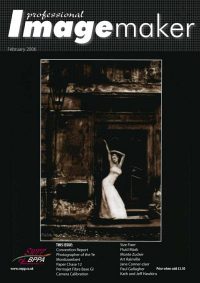articles/Fine-art/visualpoet-page2
Can you be a visual Poet? - part 2 of 1 2
Published 01/02/2006

I love that quote; it really sums up how I feel about my work these days.
They talk to us, you know, they do. Our creations, our work - if we take the time and listen with eyes wide. Sometimes my Caresser work tells me what it is meant to be as I work on it; sometimes it takes on an undulant Baroque rhythm, other times a serene, meditative, Shakespearean mood.
My description of my process of photo-painting has been likened to hearing a passionate musician describe the sense of wonder that takes hold of his body as a new crescendo of notes take flight. The essence of my Caressers has so many roots - inspirations from 17th century Dutch painters who depicted picturesque dilapidation, the glowing spirit of a chubby Rubens cherub, the romanticism of a wistful lady-in-waiting by Frederick Leighton. My transitional work was homage to the Pre-Raphaelite Brotherhood, Rosetti in particular. His lyric painting evoked a stylised, romanticised depiction of love.
The more time I spend in art museums, the more my work evolves. Every day is more exciting than the last. After all these years, I finally feel like a Visual Poet of sorts. The Dictionary defines a Poet as, "One endowed with great imaginative, emotional, or intuitive power and capable of expressing his conceptions, passion, or intuitions in appropriate language".
Technique is not enough to be a Poet. Even a great idea is not enough. To become a true Poet you need to find your creative soul and express it. Your soul will set you on a path to creating work with a personal signature vision. That vision is based on who you are, not the technical you, but the aesthetic you. That aesthetic you is comprised of your past experiences and your current inspirations.
You need to be a Visual Poet to create portraits on this level; it can't be just a technical cut and paste. The Visual Poet constructs a portrait that makes a subject's essence apparent to an insightful viewer. Backgrounds and iconography lend a meaningful light to the sitter. Metaphors are not lost in translation but rather heighten the storyline that truly portrays the subject.
Much like building a family group composition, one person at a time, when I sit to compose and assemble the image in the computer, I do so with little thought of the technical. I also seldom have a method in mind, no preconceived game plan.

The first image I try to place into the portrait is the first one that moves me, that tugs at me, it cries 'try me, try me'. There are some aspects about this aesthetic practice that I have learned deeply.
One - As difficult as it is to face the blank canvas of pixels and begin, the more daunting task is to decide when to stop. Caressers, like poems, are never finished; they are, at some point, gently abandoned.
Two - You must establish a policy of Visitation Rights.
Your creation will look different, sometimes very different, to you tomorrow. Some days you will make slight changes, others major adjustments. It is a course of rub and buff. Take away and give again, but please, SAVE the first one - it might have been the best.
The great French artist was famous for the story of how one day he was standing in front of one of his paintings in an art museum when he suddenly pulled out paint and brush and began to repaint a portion of the canvas hanging there in front of him. An aghast guard, not knowing who Bonnard was, raced up and began to manhandle the painter as the artist shouted, 'It's me - Bonnard!' Fortunately the museum curator happened by the scene and convinced the guard to release the artist and for Bonnard to leave his painting as he had previously finished it. Yes, this is a difficult, perhaps the most difficult, part of the modus operandi for me, knowing when it needs a touch more, knowing when to leave it be for others to see.
As the old saying goes, "What goes around comes around." Many years ago the great early photographic pioneer, Peter Henry Emerson championed the cause of awakening the masses to the fact that photography was indeed an art form.
His poignant landscape work of the English countryside earned him the title of the first Photographic Poet.
Who knows where any of us will be in the future in terms of creating our artwork, what new technologies await us, what new inspirations? What I do know for certainty is that now is the next great time to be a Visual Poet.
Please Note:
There is more than one page for this Article.
You are currently on page 2
1st Published 01/02/2006
last update 09/12/2022 15:00:08
More Fine-art Articles
There are 20 days to get ready for The Society of Photographers Convention and Trade Show at The Novotel London West, Hammersmith ...
which starts on Wednesday 14th January 2026





